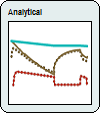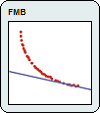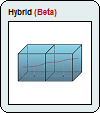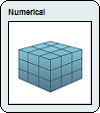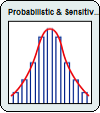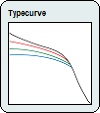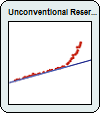IHS RTA
IHS rate transient analysis (RTA) is a software package that enables you to conduct advanced decline analyses on both production and flowing pressure data at the same time. You can determine expected ultimate recovery, gas-in-place, permeability, and skin for material balance analyses without having to shut in a well.
Note: For a video-based explanation about IHS RTA, watch our Training Videos (opens in a new window).
IHS RTA uses the following analysis methods:
|
|
AnalyticalWith these analysis methods, you can create your own reservoir model to validate the results of your analyses. You can also create more complicated reservoir models such as water drive, multilayer, composite, and multi-stage fractured Hz composite models for history matching. |
|
|
|
FMBThe flowing material balance (FMB) analysis method uses reservoir performance flow data to evaluate original hydrocarbons in place. This technique is a good alternative to static material balance method for estimating hydrocarbon in place without having to shut the well in. |
|
|
|
|
Hybrid (Beta)The hybrid model is essentially a numerical model, but with certain modifications to significantly reduce computation time, so that it is almost as fast as an analytical model. |
|
|
NumericalThese analysis methods model multiphase flow situations in the reservoir. Numerical models can also be used to enhance the modeling exercise when more detailed reservoir data is available in more complicated cases. |
|
|
|
Probabilistic & SensitivityA probabilistic analysis is a technique to quantify the impact of uncertainties on output variables, and to find the range of probable outcomes as well as the most likely. A sensitivity analysis is the systematic investigation of the reaction of the simulation outputs to extreme values of the model’s input. |
|
|
|
TypecurveAgarwal-Gardner estimates fluid-in-place volumes, drainage area, reservoir permeability, skin around the well, or fracture half-length / conductivity for hydraulically fractured wells. Blasingame estimates skin, formation permeability, in-place fluid volumes, and reservoir drainage area. Blasingame has several families of advanced typecurves such as finite conductivity, elliptical, water drive, open-hole horizontal well typecurves in addition to classic radial, and fracture typecurve models. Fetkovich estimates EUR, skin, and formation permeability from the rate history of the well. NPI (Normalized Pressure Integral) is the inverse of the Agarwal-Gardner typecurves. This analysis method is often preferred by those who come from a pressure transient analysis domain. Outputs are as the same as Agarwal Gardner. Transient is useful for datasets containing long-term transient flow. Outputs are the same as other modern typecurve-match techniques. Wattenbarger is well-suited for reservoirs that exhibit a long-lasting transient linear flow regime. This method is particularly useful for the analysis of tight and shale gas wells. |
|
|
|
Unconventional ReservoirThis analysis method is used to interpret the linear flow signal exhibited in multiple-stage hydraulically fractured unconventional reservoirs, and to forecast production from such reservoirs. |
